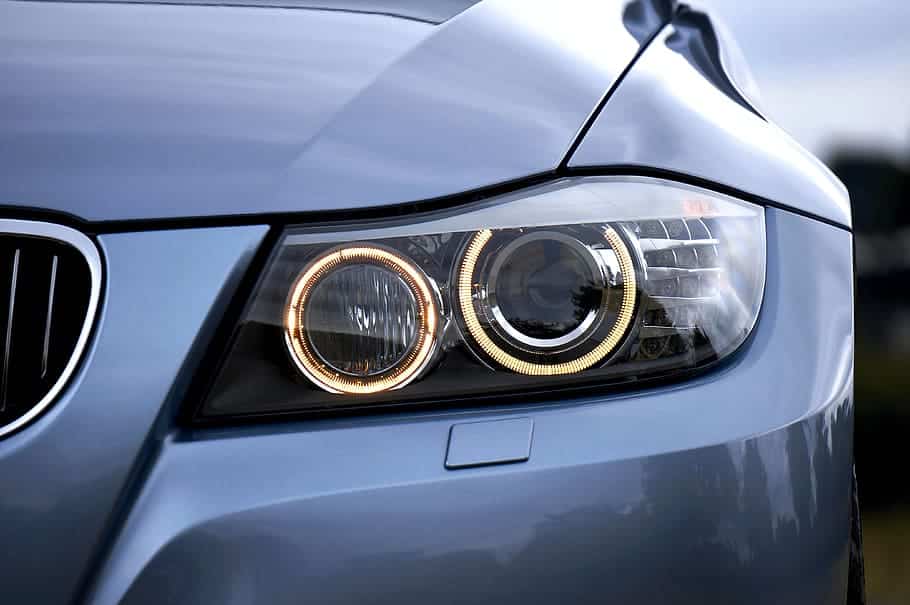Rumored Buzz on Hikari Led Headlight
Table of ContentsThe Best Guide To Hikari Led HeadlightThe Hikari Led Headlight DiariesExamine This Report on Hikari Led Headlight


These are physically and electrically interchangeable with H4 bulbs - hikari led headlight. Similar optical methods are used, but with various reflector or lens optics to develop a United States beam pattern instead of a European one. Each system has its advantages and downsides. The American system historically allowed a greater general quantity of light within the low beam, since the whole reflector and lens location is utilized, but at the exact same time, the American system has actually typically offered much less control over upward light that causes glare, and because of that has been largely declined outside the United States.
The high beam is usually a rough copy of the low beam, shifted a little upward and leftward. The European system traditionally produced low beams consisting of less overall light, due to the fact that only 60% of the reflector's area is used to create the low beam. However, low beam focus and glare control are simpler to accomplish.
Complex-reflector innovation in mix with new bulb styles such as H13 is enabling the development of European-type low and high beam patterns without the usage of a Graves Shield, while the 1992 US approval of the H4 bulb has actually made typically European 60%/ 40% optical area departments for low and high beam common in the US - hikari led headlight.
Dual-beam HID headlamps employing reflector technology have been made using adjustments of both methods. In this system a filament is situated at one focus of an ellipsoidal reflector and has a condenser lens at the front of the light. A shade is located at the image airplane, in between the reflector and lens, and the forecast of the leading edge of this shade offers the low-beam cutoff.
The shade might be decreased by a solenoid activated pivot to supply low beam, and eliminated from the light course for high beam. Such optics are referred to as BiXenon or BiHalogen projectors. If the cutoff shade is repaired in the light course, separate high-beam lights are needed. The condenser lens may have minor fresnel rings or other surface treatments to minimize cutoff sharpness.
The Best Guide To Hikari Led Headlight
Hella presented ellipsoidal optics for acetylene headlamps in 1911, but following the electrification of vehicle lighting, this optical strategy wasn't utilized for lots of years. see post The first modern-day polyellipsoidal (projector) automotive lamp was the Super-Lite, an auxiliary headlamp produced in a joint endeavor in between Chrysler Corporation and Sylvania and optionally set up in 1969 and 1970 full-size Dodge cars.
Projector main headlamps first appeared in 1981 on the Audi Quartz, the Quattro-based concept automobile designed by Pininfarina for Geneva Automobile Salon. [] Developed basically at the same time in Germany by Hella and Bosch and in France by Cibi, the projector low beam permitted precise beam focus and a much smaller-diameter optical plan, though a much deeper one, for any provided beam output (hikari led headlight).
The primary downside of this type of headlamp is the requirement to accommodate the physical depth of the assembly, which might extend far back into the engine compartment. The very first electrical headlamp light source resource was the tungsten filament, running in a vacuum or inert-gas atmosphere inside the headlamp bulb or sealed beam.

Tungsten-halogen innovation (likewise called "quartz-halogen", "quartz-iodine", "iodine cycle", etc.) increases the effective luminescent effectiveness of a tungsten filament: when running at a higher filament temperature which leads to more lumens output per watt input, a tungsten-halogen light has a a lot longer brightness lifetime than comparable filaments operating without the halogen regeneration cycle.
European-designed halogen headlamp source of lights are generally set up to offer more light at the very same power intake as their lower-output plain tungsten counterparts. By contrast, many US-based designs are configured to reduce or lessen the power usage while keeping light output above the legal minimum requirements; some United States tungsten-halogen headlamp source of lights produce less initial light than their non-halogen counterparts.
There was an improvement in seeing range with US halogen high beams, which were allowed for the very first time to produce 150,000 candela (cd) per car, double the non-halogen limit of 75,000 cd however still well shy of the global European limitation of 225,000 cd. After exchangeable halogen bulbs were permitted in US headlamps in 1983, development of United States bulbs continued to prefer long bulb life and low power intake, while European styles continued to prioritise optical precision and maximum output.
Hikari Led Headlight Can Be Fun For Anyone
It was presented in 1962 by a consortium of European bulb and headlamp makers. This bulb has a single axial filament that takes in 55 watts at 12. 0 volts, and produces 1550 lumens 15% when operated at 13. 2 V. H2 (55 W @ 12. 0 V, 1820 lm @ hop over to these guys 13.